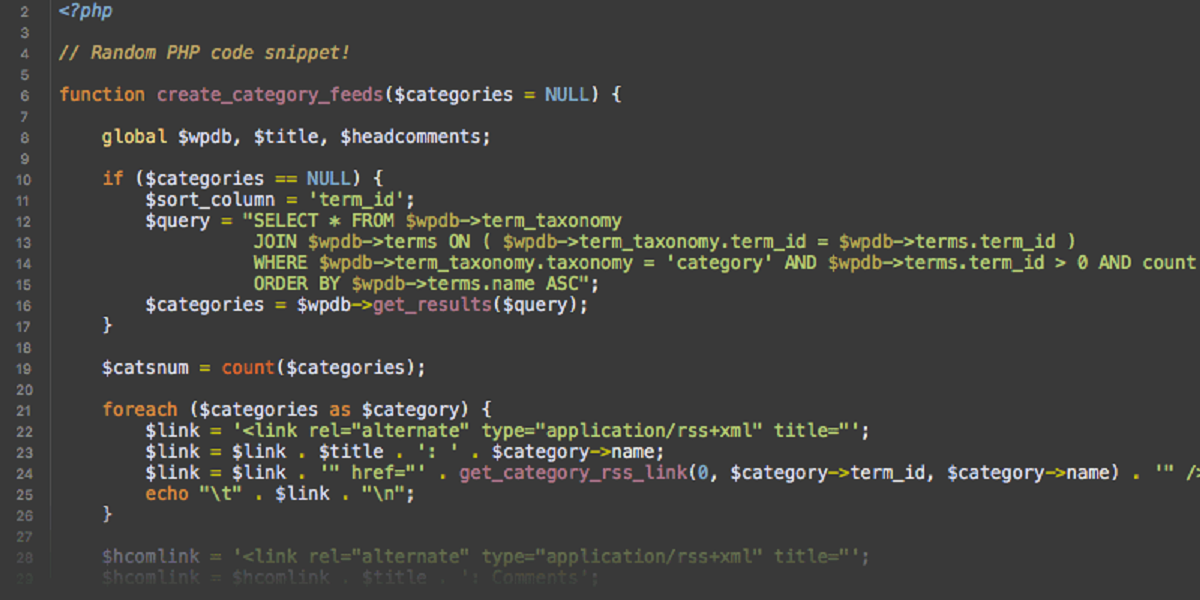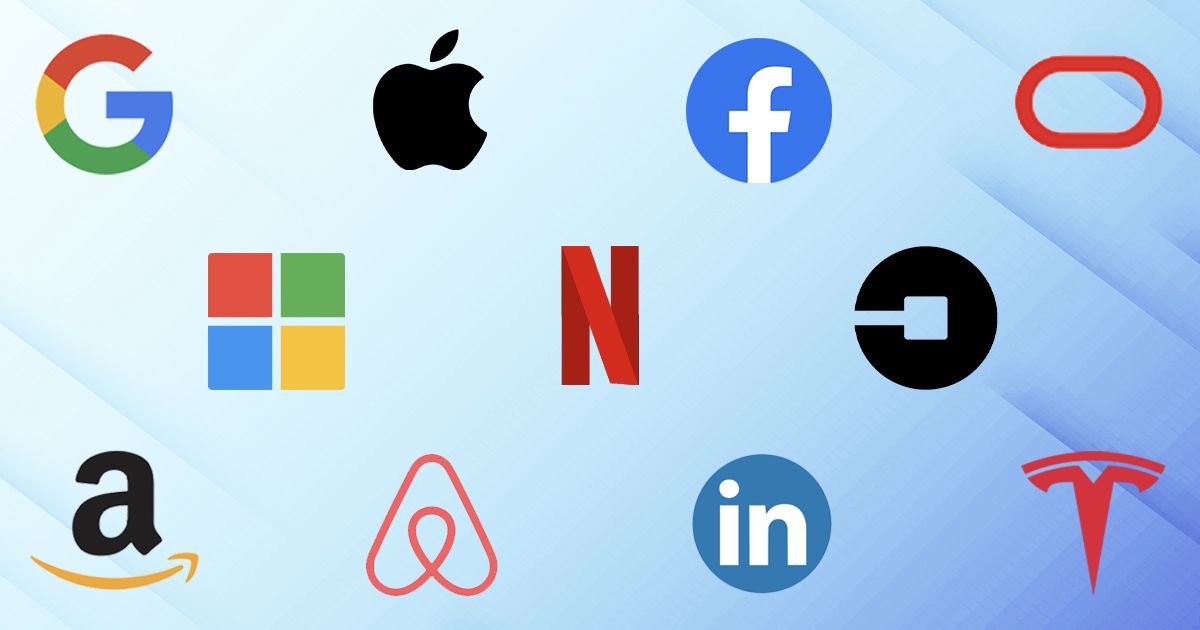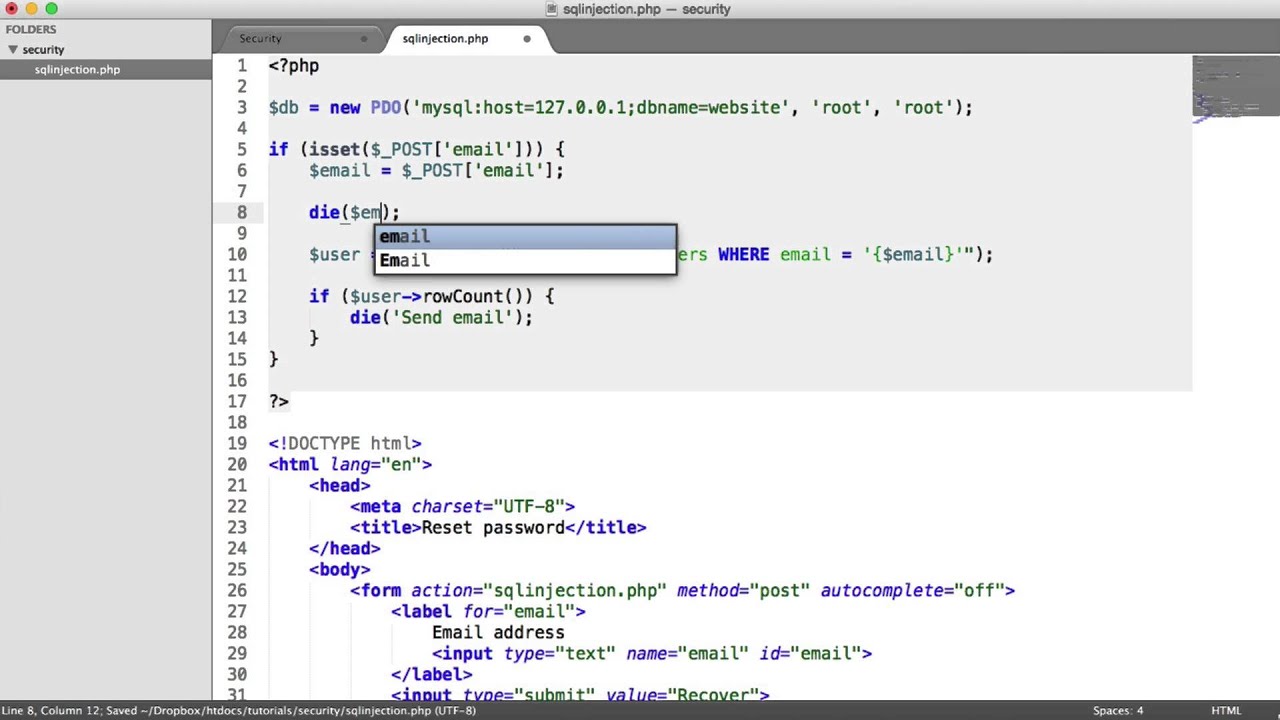Introduction
Coding, also known as programming, is the process of creating instructions for computers to perform specific tasks. It involves writing lines of code using programming languages like HTML, CSS, JavaScript, Python, and more. These languages serve as the building blocks for creating websites, applications, games, and other digital tools.
In today’s digital age, coding has become an essential skill with a wide range of applications. From building websites and mobile apps to automating tasks and analyzing data, coding empowers individuals and organizations to bring their ideas to life and solve complex problems.
With the rapid advancement of technology, the demand for coding skills continues to grow. Whether you’re a professional developer or a beginner learning the basics, understanding coding concepts and having the ability to write code can open up countless opportunities in various industries.
In this article, we will explore different examples of coding and its importance across different domains. We will delve into how coding is used to develop websites, build mobile applications, create games, automate tasks, and analyze data. Through these examples, we will highlight the versatility and significance of coding in today’s digital world.
What is Coding?
Coding, also known as programming, is the process of instructing computers to perform specific tasks by writing lines of code using programming languages. It is the language of computers, allowing us to communicate with digital devices and create the software and applications that power our modern world.
Coding involves a structured approach to problem-solving and logical thinking. It requires understanding the syntax and rules of a programming language to write code that can be executed by a computer. Each programming language has its own unique syntax and purpose, allowing developers to create different types of applications and software.
At its core, coding is about giving instructions to a computer. These instructions can range from simple tasks like displaying text on a website to complex algorithms that power artificial intelligence and machine learning models.
Coding is not limited to a specific set of individuals. Anyone can learn how to code, regardless of their age or educational background. In fact, many resources and online platforms offer coding courses and tutorials for beginners to get started.
Learning how to code opens up a world of possibilities. It enables individuals to turn their ideas into reality and empowers them to create innovative solutions to problems. Coding skills are highly sought after in today’s job market, with many industries relying on technology and software development.
Moreover, coding promotes critical thinking, problem-solving, and creativity. It encourages individuals to think analytically and break down complex problems into smaller, manageable tasks. Through coding, individuals can build their digital literacy and gain a deeper understanding of how technology works.
Overall, coding is an important skill in the digital age. It allows us to shape the technological landscape and create solutions that improve our lives. With coding, the possibilities are endless, and anyone with dedication and curiosity can embark on an exciting journey into the world of programming.
Why is Coding Important?
Coding plays a crucial role in our increasingly digitized world. Here are some reasons why coding is important:
1. Driving Technological Innovation:
Coding is at the core of technological advancements. It enables the development of new software, applications, and tools that shape various industries. From AI-powered virtual assistants to cutting-edge medical technologies, coding drives innovation and pushes the boundaries of what is possible.
2. Solving Complex Problems:
Coding equips individuals with the skills to tackle complex problems. It encourages logical thinking, problem-solving, and creativity. Through coding, individuals can analyze a problem, break it down into smaller parts, and develop solutions using programming languages and algorithms.
3. Empowering Digital Literacy:
In today’s digital age, understanding how to code is an essential component of digital literacy. It enables individuals to navigate and thrive in the rapidly evolving technological landscape. Coding proficiency allows people to make informed decisions, understand the capabilities and limitations of technology, and communicate effectively with developers and technologists.
4. Fostering Career Opportunities:
Coding skills are highly sought after in the job market. As technology continues to revolutionize industries, there is a growing demand for professionals who can design, develop, and maintain software and applications. Having coding skills opens up a wide range of career opportunities in fields like software development, web development, data analysis, and cybersecurity.
5. Encouraging Creativity and Innovation:
Coding is a form of creative expression. It allows individuals to transform their ideas into reality and bring their visions to life. By coding, individuals can build unique websites, develop interactive mobile apps, and create immersive virtual reality experiences. It fosters innovation and empowers individuals to think outside the box.
6. Promoting Critical Thinking and Analytical Skills:
Coding promotes critical thinking and analytical skills. It requires individuals to break down complex problems into smaller, manageable tasks, think logically, and design efficient algorithms. Through coding, individuals enhance their ability to approach challenges systematically and develop logical solutions.
7. Bridging the Digital Divide:
By teaching coding skills, we can bridge the digital divide and empower individuals who may have limited access to technology. Teaching coding in schools and providing coding resources to marginalized communities can help create a more inclusive and equitable society by providing opportunities for upward mobility.
In summary, coding is important because it drives technological innovation, solves complex problems, empowers digital literacy, fosters career opportunities, encourages creativity and innovation, promotes critical thinking, and bridges the digital divide. Developing coding skills is not only beneficial for individuals but also contributes to the progress and advancement of society as a whole.
Example 1: Creating a Simple Website
One of the most common examples of coding is creating a simple website. Websites serve as virtual storefronts, online portfolios, or platforms to share information. With coding, you can bring your vision to life and build a website that meets your unique requirements.
To create a website, you’ll need to use languages like HTML (Hypertext Markup Language) and CSS (Cascading Style Sheets). HTML provides the structure and content of the website, while CSS adds style and visual enhancements.
Using HTML, you can define headings, paragraphs, lists, images, and links. For example, to create a heading, you would use the <h1> tag, followed by the content of the heading. Similarly, the <p> tag is used to create paragraphs, and <img> tag to insert images. CSS allows you to control the layout, colors, fonts, and other design aspects of your website.
Once you have written the code for your website, you can save the file with a .html extension and open it in a web browser to see the result. This immediate feedback loop allows you to make adjustments and see the changes in real-time.
In addition to HTML and CSS, you can also use JavaScript to add interactive elements to your website. JavaScript enables you to create sliders, carousels, forms, and other dynamic components that engage users and improve the user experience.
Creating a simple website is a great way to get started with coding. It allows you to learn the basics of HTML, CSS, and potentially JavaScript, while giving you a platform to showcase your personal or professional information online.
With continuous learning and practice, you can enhance your web development skills and create more complex and feature-rich websites that cater to specific needs or industries.
Example 2: Developing a Mobile Application
Another powerful example of coding is the development of mobile applications. In today’s mobile-dominated world, having a mobile app can provide a convenient and immersive experience for users. By coding, you can create mobile apps for various platforms like iOS and Android.
There are different approaches to developing mobile applications, but one popular option is using frameworks like React Native or Flutter. These frameworks allow developers to write code in a single language (JavaScript for React Native and Dart for Flutter) and generate apps that run on multiple platforms.
When developing a mobile app, you need to focus on the user interface (UI) and user experience (UX). This involves designing screens, navigating between them, and incorporating interactive elements like buttons and forms. Coding languages like JavaScript, Dart, and XML (for Android development) are used to define the UI components and their behaviors.
Furthermore, coding languages facilitate integrating various functionalities into mobile apps. For example, you can use APIs (Application Programming Interfaces) to fetch data from external sources, such as retrieving weather information or displaying real-time stock prices. Mobile app development also involves leveraging device features like GPS, camera, and push notifications, enabling a rich and multi-faceted user experience.
During the development process, you can use emulators or test devices to check the app’s behavior and ensure it functions properly on different screen sizes and operating system versions. Debugging tools help identify and fix any issues that may arise while coding the app.
Once the coding is complete, you can publish the app to the respective app stores, such as the Apple App Store or Google Play Store. This allows users to download and install your app on their devices, reaching a wider audience.
Developing a mobile application requires a combination of coding skills, creativity, and understanding of the target audience. With continuous learning and practice, you can create engaging and functional mobile apps that provide value to users and enhance their mobile experience.
Example 3: Building a Game
Building a game is an exciting example of coding that allows you to create interactive and immersive experiences for players. Whether you want to develop a simple puzzle game or a complex multiplayer adventure, coding is at the heart of game development.
Game development involves a combination of programming, design, and creativity. It requires coding languages like C++, C#, or Python, as well as game development engines like Unity or Unreal Engine, which provide a framework for building games.
When building a game, you start by designing the game mechanics, characters, levels, and visual elements. Then, you write code to implement those designs and bring them to life. This includes programming the game logic, physics, player controls, and AI behaviors.
For example, in a 2D platformer game, you would code the movement of the player character, handle collisions with the environment, and program enemy behaviors. In a first-person shooter game, you would code the shooting mechanics, reloading, enemy AI, and player movement.
Coding also involves creating user interfaces, menus, and HUDs (Heads-Up Displays) in games. These elements provide players with information and options as they navigate through the game world. Additionally, coding is used to implement sound effects, music, and visual effects that enhance the overall gaming experience.
Game development often requires debugging and testing to identify and fix any issues or glitches. This iterative process involves coding, testing, and refining the game until it achieves the desired level of gameplay, performance, and polish.
Once your game is complete, you can distribute it through various platforms, such as PC, console, or mobile. This gives players the opportunity to enjoy your creation and experience the world you have built.
Game development is a challenging but rewarding endeavor. It combines technical skills with creativity, allowing you to create interactive experiences that entertain and engage players. By mastering coding for game development, you can bring your imaginative ideas to life and create immersive worlds that captivate audiences.
Example 4: Automating Tasks with Scripts
One powerful application of coding is automating repetitive tasks using scripts. Coding allows you to write scripts that can perform various actions automatically, saving time and effort in accomplishing mundane and repetitive activities.
Scripts are sequences of code written in languages such as Python, Bash, or PowerShell. They can be used to automate tasks like file operations, data processing, system maintenance, and more.
For example, let’s say you have a directory containing hundreds of files that need to be renamed. Writing a script using a language like Python allows you to define a pattern and automate the renaming process for all the files in the directory, saving you from manually renaming each file.
Similarly, scripts can be used for automating data processing tasks. For instance, if you have a large dataset that requires cleaning or transformation, writing a script allows you to define the necessary operations and apply them to the dataset in a repeatable and efficient manner.
Task automation with scripts is not limited to file operations and data processing. It can also be used to automate system maintenance tasks like backups, software installations, or system updates. By coding scripts to perform these tasks, you can streamline your workflow and ensure routine operations are executed consistently and accurately.
Moreover, scripting can be utilized in web development to automate the deployment and testing processes. For instance, using tools like Jenkins or GitLab CI/CD, you can write scripts that build and deploy your application whenever changes are made to the codebase. This automates the deployment process and ensures a continuous integration and delivery pipeline.
Automating tasks with scripts has numerous benefits. It increases productivity by eliminating the manual execution of repetitive tasks, reducing the chance of errors and saving time. It also allows for scalability and consistency, as scripts can be easily reused and applied to similar tasks in different contexts.
By learning scripting languages and leveraging their capabilities, you can automate various tasks, simplify workflows, and focus on more productive and innovative activities.
Example 5: Analyzing and Visualizing Data
One highly useful example of coding is the analysis and visualization of data. With coding, you can process and understand large volumes of data, uncover patterns, and present insights through visual representations.
Data analysis involves using programming languages like Python, R, or SQL to perform various operations on datasets. These operations could include cleaning and organizing data, calculating statistics, performing mathematical modeling, or running complex algorithms.
By coding scripts or using specialized libraries, you can automate the data analysis process. For instance, you can write code to import data from different sources, filter and manipulate the data to extract relevant information, and perform statistical analysis to identify trends or outliers.
Data visualization is an integral part of data analysis. Coding allows you to create visual representations of data using libraries like Matplotlib, ggplot, or D3.js. These libraries provide tools for creating charts, graphs, maps, or interactive visualizations that help communicate insights effectively.
With data visualization, you can present complex information in a concise and understandable way. Visualizations like bar charts, line graphs, scatter plots, or heatmaps enable viewers to grasp patterns, compare data points, spot trends, and make data-driven decisions.
For example, in a business setting, coding can be used to analyze sales data, customer behavior, or financial trends. By coding scripts to process and visualize this data, businesses can gain valuable insights and make informed decisions to drive growth and improve efficiency.
Data analysis and visualization are crucial in fields like scientific research, finance, marketing, healthcare, and many others. Coding empowers professionals in these domains to leverage data for informed decision-making, problem-solving, and strategic planning.
Furthermore, data analysis and visualization promote transparency and help communicate complex information effectively. By presenting data in a visual format, coding enables stakeholders to engage with the data, ask questions, and understand the underlying patterns and relationships.
With the ever-increasing availability of data, the ability to analyze and visualize it has become a highly sought-after skill. By mastering data analysis and visualization with coding, you can unlock the potential of data and make meaningful contributions in various domains.
Conclusion
Coding is a powerful skill that is essential in today’s digital world. From creating websites and developing mobile applications to building games, automating tasks, and analyzing data, coding has a significant impact across various domains.
Through coding, individuals can transform their ideas into reality, driving technological innovation and solving complex problems. It empowers individuals and organizations to harness the potential of technology and create solutions that improve our lives.
Learning how to code not only opens up exciting career opportunities but also promotes critical thinking, problem-solving, and creativity. It fosters digital literacy and equips individuals with the skills to navigate and thrive in the rapidly evolving technological landscape.
Whether you’re a beginner starting with simple website development or an experienced coder working on complex data analysis, continuous learning and practice are key to mastering coding skills. Embracing new technologies, exploring coding languages, and keeping up with industry trends are essential for staying relevant and advancing in the field.
Furthermore, coding is not limited to a specific group of individuals. It is a skill that can be learned and mastered by anyone, regardless of age or educational background. Various resources, online platforms, and coding bootcamps make it accessible for beginners to start their coding journey.
In conclusion, coding is an indispensable tool in today’s digital age. Its importance cannot be underestimated, as it shapes how we interact with technology and drives innovation in fields ranging from software development and web design to data analysis and game development. By embracing coding, individuals can unlock their creative potential, solve complex problems, and make a meaningful impact in the digital world.

























